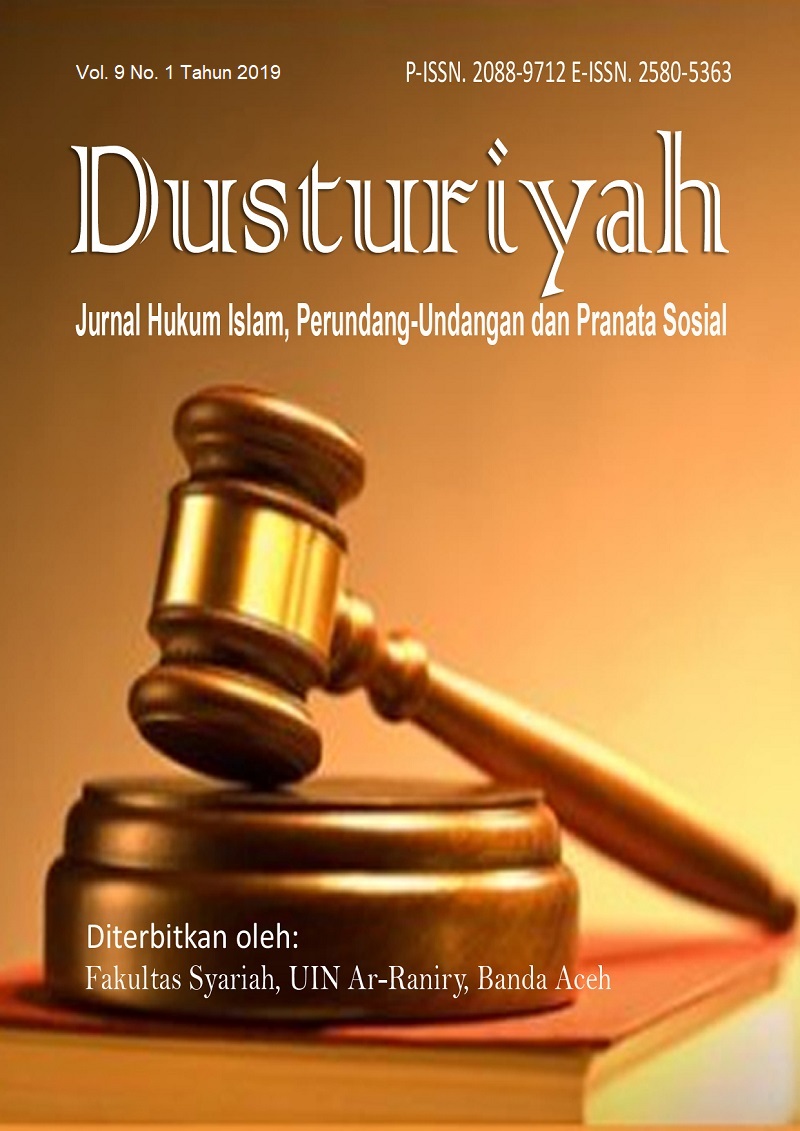WANITA SALAT BERJAMAAH DI MASJID (Kajian Teori Double Movement Terhadap Ayat 33 Surah Al-ahzab dan Nash-Nash Terkait)
DOI:
https://doi.org/10.22373/dusturiyah.v9i1.4759Keywords:
Women Praying in Congregation, Mosque, Double Movement.Abstract
The problem of leaving a woman from home for various activities is prohibited in the Qur'an surah al-Ahzab verse 33 if it is understood in general. It is also stated in the hadith narrated by ibn khuzaimah that a woman is aurat who should not go out, especially without someone accompanying her. But there is another hadith narrated from Abu Hurairah which states that a husband should not prohibit his wife from approaching the house of Allah. Then how is the law of women praying in congregation in mosques based on the Double Movement Theory against verse 33 of surah al-Ahzab and related passages. The research method used in this paper is Library Research. In the case of women praying in congregation in mosques, the clause regarding elevating the status of women and giving women the opportunity to participate in public spaces must receive attention and be determined to have fundamental interests. Furthermore, through the double movement theory It can be understood that in this case, the Qur'an intends to maximize equality between men and women, and for this purpose it states that a woman's freedom in the public sphere is normally ideal.
References
Cyrl Glasse, Ensiklopedi Islam, tarj. Ghufron A. Mas’adi, (Jakarta: Raja Grafindo Persada, 1999)
Abu Daud, Sahih Sunan Abu Daud, jilid 1, (Jakarta: Pustaka Azam, 2007
Muhyar Fanani, Metode Studi Islam; Aplikasi sosiologi pengetahuan sebagai cara pandang, (Yogyakarta: Pustaka Pelajar, 2010
Mawardi, Hermeneutika Fazlur Rahman: Teori Double Movement, (Jakarta: Elsaq Press, 2010)
Nasaruddin Umar, Argumen Kesetaraan Gender Perspektif Alquran. (Makassar: Kreatif Lenggara, 2017)
Said Abdullah Said al-Hatimiy, Citra Sebuah Identitas Wanita dalam Perjalanan Sejarah, (Surabaya: Risalah Gusti, 1994),
Zaitunah Subhan, Alquran dan Perempuan Munuju kesetaraan Gender dalam Penafsiran. (Jakarta: Prenadamedia Group, 2015).
Salim Abd al-Ghani al-Rafi’i, Ahkam al-akhwal al-Syaksiyah li al-Muslimin fi al-Gharb, (Beirut: Dar Ibn Hazm, Cet. I, 2002,
Agustin Hanapi, Peran Perempuan dalam Islam, Gender Equality International Journal of Child and Gender Studies, Vol. !, No.1 Maret 2015.
M. Quraish Shihab, Membumikan Alquran. (Bandung, Mizan, 2007),
Muhammad Siddiq Hasan Khan, Ensiklopedia Hadis Sahih Kumpulan Hadis tentang Wanita, (Jakarta: Hikmah, 2009),
Melly Tan (ed), Perempuan Indonesia Pemimpin Masa Depan,( Jakarta: Pustaka Sinar Harapan, 1991)
Tri Marhaeni Pudji Astuti, “Citra Perempuan Dalam Politik”, Jurnal Studi Gender, vol 3 no 1Jan-Jun 2008.
Henny Wiludjeng, Dkk, Dampak Pembakuan Peran Gender Terhadap Perempuan kelas Bawah, (Jakarta: LBH-APIK Jakarta, 2005).
Saifuddin Zuhri, Buku Pintar Haid Problematik Wanita, (Jakarta: Almaya, 2010),
Departemen Pendidikan dan Kebudayaan, Kamus Besar Bahasa Indonesia, (Jakarta: Balai Kota, 1989),
Sarwono S.W., Psikologi Remaja, (Jakarta: Raja Grafindo Persada, 2005),
Dendy Sugono, Kamus Besar Bahasa Indonesia, (Jakarta: Departemen Pendidikan Nasional, 2008)











